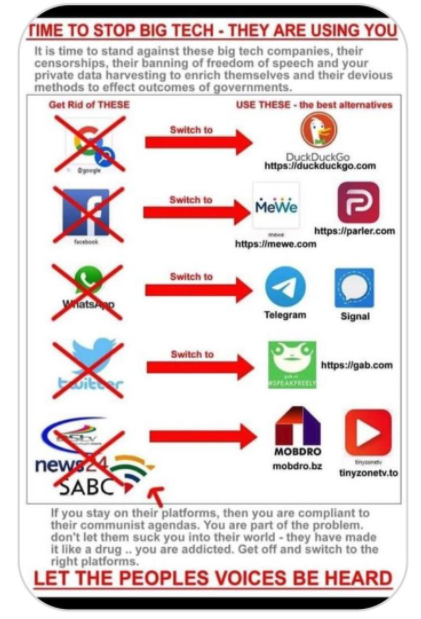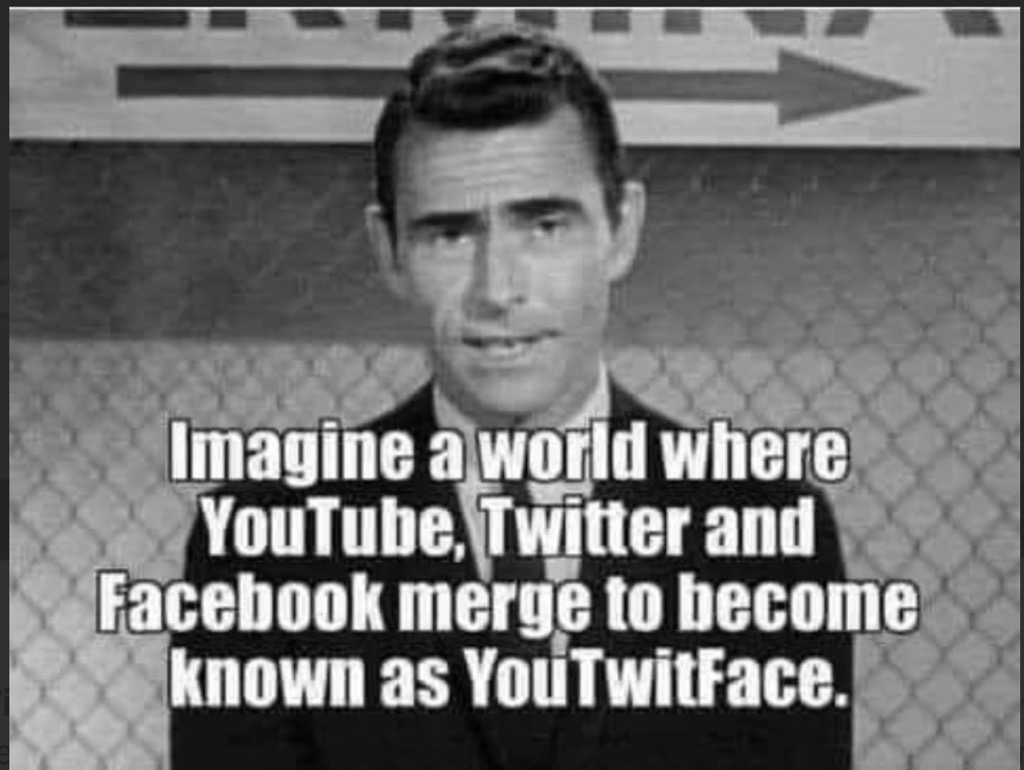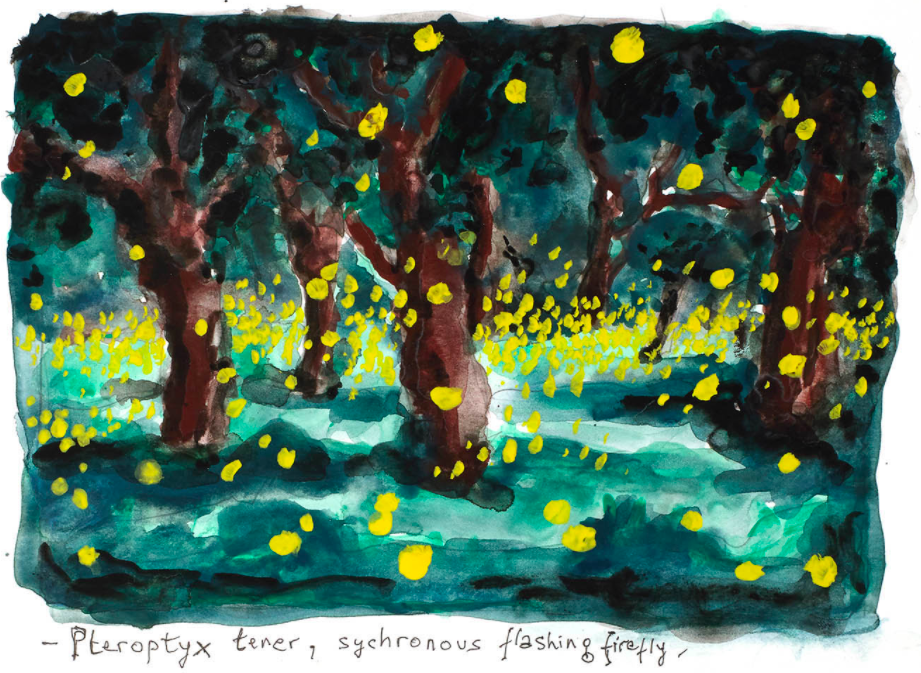THE COMMONS
INTERVIEW WITH DAVID BOLLIER
AFD – Agence Francaise de Developpement, France
2016, 3 min 17 sec
David Bollier, one of the co-founders of the Commons Strategies Group, gives examples of commoning.
AFD – Agence Francaise de Developpement, France
2016, 3 min 17 sec
David Bollier, one of the co-founders of the Commons Strategies Group, gives examples of commoning.
NYSU Films: The Birds, the Prequel
How to protect collective memory from the copyright wars launched by Hollywood and the music industry? We will zoom in on strategies like hactivism, piracy, sampling, the Creative Commons, the economics of online sharing, and new genres of collaborative creativity in the context of the networked information economy. In short: how creators and artists can take back control.
We turn now to a class of enclosures that don’t get that much attention: the many appropriations of knowledge and culture. You can tell that enclosure has reached troubling extremes when businesses claim ownership of words, colors and smells! (TLC p. 53) There are actually trademarks for smells, such as “the smell of freshly cut grass on tennis balls.” The US television network NBC owns a trademark on three musical notes played on a chime — “ding, dong, ding!” One wonders if Andy Warhol would have been able to create his Campbell Soup silkscreen if today’s trademark laws were in force fifty years ago. (David Bollier: Think like a Commoner, 2014: p. 72)
Copyright scholar James Boyle wrote a famous essay declaring that we are in the midst of a “Second Enclosure Movement.” The first was, of course, the English enclosure movement. The second one, now underway, is the over-privatization (i.e., corporatization) of creative works, information and knowledge. (TLC p. 69) The extension of copyright terms is a crude political case of corporate protectionism. (TLC p. 71) For instance, trademark law is a tool that is being abused to shut down the cultural commons and protect markets. (David Bollier: Think like a Commoner, 2014: 71)
This sweeping change in the scope of copyright law has been followed by intensive PR campaigns by the entertainment industry to persuade us that music, film and books must be seen as “intellectual property” that is as sacrosanct as your home or car. Likening culture to private property has been insidiously effective — if misleading — because it has allowed industry to claim that any unauthorized use of creative works constitutes a theft. Our natural human impulses to imitate and share — the essence of culture — have been criminalized. (David Bollier: Think like a Commoner, 2014: 68)
Hollywood once regarded the arrival of television, cable TV and the videocassette recorder as profound threats to its core business — the theatrical exhibition of films — only to discover that each invention opened up lucrative new markets for it. In this tradition, studios are now incensed that people dare to use excerpts of films and television shows noncommercially and without authorization — a right explicitly protected under the “fair use” (or in some countries, “fair dealing”) doctrine of copyright law. (David Bollier: Think like a Commoner, 2014: 70)
Pluto, Goofy and Donald were destined to become public-domain characters five years later. To protect its cartoon characters from becoming freely available, Disney mounted an aggressive lobbying campaign to enact the Copyright Term Extension Act. It flexed its political muscle by giving campaign contributions to most of the congressional sponsors of the legislation. (David Bollier: Think like a Commoner, 2014: 71)

Judith Butler: Who Owns Kafka? / London Review of Books (2011)
Peter Lamborn Wilson / Hakim Bay, Pirate Utopias: Moorish Corsairs and European Renegadoes (2003)
David Bollier, Viral Spiral: How the Commoners Built a Digital Republic of Their Own (2009)
William Patry, Moral Panics and the Copyright (2003)
Hito Steyerl, Duty-Free Art (e-flux Journal #63 – March 2015)
Creative Commons 4.0
Creative Commons Licences
OpenLearn
Free Music Archive
Onions Studios: Should the Government Stop Dumping Money into a Giant Hole?
Is corporate neo-liberalism on a suicidal course penetrating every aspect of our lives? What if instead of economy determining our lives, we ourselves decide together what economy should mean and define? The glitches inherent to the capitalist reality program show that it is anything but realistic. While causing ecocide of our very biotope, the world we inhabit, the pathologies of the market are hardly diagnosed. Profit is reaped by the corporations but the risks & bailouts are carried by the tax payer, plundering the common wealth. How to imagine monetary ecosystems? In this section we will zoom in on new open business models, sustainable economics, doughnut economics, Bhutan’s example of a GDP of happiness, participatory budgeting within government situations, time banking, alternative currencies, bartering, and the new economics of online sharing. Ironically the add-on is the emergence of a social fabric;—or would it be the other way around?

Finding a sustainable rapprochement between commons and markets is a complicated challenge. It helps to understand that markets are not necessarily the same thing as capitalism. Markets can be entirely local, fair and responsive to community needs if they are sufficiently embedded in communities and accountable to them. (David Bollier: Think like a Commoner, 2014: 137)
So can market activity and commons coexist happily? The question is a controversial one among some commoners. David Bolier’s view is that few commons can operate in total isolation from the rest of society. Virtually all commons are hybrids that depend in some measure upon the State or the Market. The important point, therefore, is to assure that commons can have as much autonomy and integrity of purpose as possible. If commons are to interact with markets, they must be able to resist enclosure, consumerism, the lust for capital accumulation and other familiar pathologies of capitalism, because that plunders nature with little concern for the long-term consequences. Markets need not be predatory and socially corrosive; they can become socially integrated into a community and made locally responsive. (David Bollier: Think like a Commoner, 2014: 137)
David Bollier states that the trick in melding commons and markets consists in nourishing a distinct culture of commoning while devising “defensible boundaries” around the commons so that it can maintain its basic autonomy. (David Bollier: Think like a Commoner, 2014: 138)
Silke Helfrich explains that we’re in need of “a shift from commons-based peer production to commons-creating peer production. The commons is not about organizational form or property rights. It’s about the purpose. (David Bollier: Think like a Commoner, 2014: 140)
These ideas clearly require a bold reconceptualization of the neoliberal Market/State. Michel Bauwens has proposed that we reimagine the State and the Market as a “triarchy” that shares governance authority with the commons — the Market/State/Commons. The goal is to realign authority and provisioning into new, more socially beneficial configurations. The State must shift its focus to become a “Partner State,” as Michel Bauwens puts it, and become more than a colluding partner of the Market sector. (David Bollier: Think like a Commoner, 2014: 145)
Bernard Lietaer: Rethinking Money: How New Currencies Turn Scarcity Into Prosperity + Money and Sustainability: The Missing Link (2013)
Kate Raworth, Doughnut Economics: Seven Ways to Think Like a 21st-Century Economist (2017)
Michel Bauwens, “The Political Economy of Peer Production, Post-Autistic Economics Review”, (2006)
Naomi Klein, This Changes Everything: Capitalism vs. The Climate (2014)
Adam Arvidsson & Nicolai Peitersen, The Ethical Economy: Rebuilding Value After the Crisis (2016)
Adam Arvidsson, Michel Bauwens & Nicolai Peitersen: The Crisis of Value and the Ethical Economy (2008)
Peter Lamborn Wilson / Hakim Bay, T.A.Z.: The Temporary Autonomous Zone, Ontological Anarchy, Poetic Terrorism (1991)
Richard Sennett, Together: The Rituals, Pleasures & Politics of Cooperation (2012)
Richard Sennett, The Fall of Public Man (1977)
David Bollier, Viral Spiral: How the Commoners Built a Digital Republic of Their Own (2009)
Juan Friere, From the Analog Commons to the New Hybrid Public Spaces (2008)
David Harvey: Rebel Cities (2012)
Robert McChesney, “The Battle for the U.S. Airwaves, 1928-1935,” in: The Political Economy of Media: Enduring Issues, Emerging Dilemmas.
Snider, J.D., “The Cartoon Guide to Federal Spectrum Policy,” New America Foundation” (2004)
James Cuno, Who Owns Antiquity? Museums and the Battle Over Our Ancient Heritage (2008)
Joseph Sax, Playing Darts with a Rembrandt:: Public and Private Rights in Cultural Treasures (2006)
FURTHER READING & RESOURCES
David Bollier & Silke Helfrich, ed.: Patterns of Commoning (2015)
David Bollier, The Commons, Short and Sweet
Donald Macon Nonini, The Global Idea of ‘the Commons’ (2007)
Tomales Bay Institute, State of the Commons:
John M. Anderies & Marco A. Janssen: Sustaining the Commons v2.0 (2013)
Peter Barnes, Capitalism 3.0: A Guide to Reclaiming the Commons (2006)
Massimo De Angelis: Crises, Movements and the Commons (2012)
Massimo De Angelis and Stavros Stavrides, On the Commons: A Public Interview with Massimo De Angelis and Stavros Stavrides by Anarchitecture (2010)
Peter Linebaugh & David Lloyd: Red Round Globe Hot Burning: A Tale at the Crossroads of Commons and Closure, of Love and Terror, of Race and Class, and of Kate and Ned Despard (2019)
David Bollier: Silent Theft: The Private Plunder of our Common Wealth (2002)
Michel Bauwens, The History and Evolution of the Commons – Commons Transition
The Commoner: http://www.commoner.org.uk.
On the Commons: http://www.onthecommons.org
International Journal of the Commons:
Digital Library Of The Commons
Library – Commons Transition Primer
Rep. John Haller introduces homeland terrorism preparedness bill
Academic knowledge has systematically been privatizated through corporate complicity and the business of patenting. The corporatization of intellectual property jeopardises our creative and political imagination in shaping reality.
Our world is more and more being redefined by Big Data: giant tech companies like Google, Facebook, Amazon and Microsoft have hijacked our personal data without our knowledge and are using it against us to generate profit. Our very agency and privacy is subjected and reduced to a market logic that makes us dance to tunes of Big Data. WE have become the product. ‘We’ are the real revenue stream in this digital economy.
It matters what thoughts think thoughts. It matters what knowledges know knowledges. It matters what relations relate relations. It matters what worlds world worlds. It matters what stories tell stories.
—Donna Haraway
(in: Staying with the Trouble, Making Kin in the Chthulucene)
It may not seem obvious, but as professors Michael Madison, Brett Frischmann and Katherine Strandburg put it, the university is a “constructed cultural commons.” The university system uses the commons paradigm to help many different people work together to generate new knowledge. It manages the flows of knowledge as a living system, and devises ways to store knowledge, improve it and introduce it to new generations. The university is a complex ecosystem of many smaller-scale commons, such as the graduate and undergraduate college, the school, the department, the library, the archive, the lecture hall and the seminar room. Anyone who lives within academia knows that the language of property rights and market transactions is quite alien to its ethos. A university does not buy and sell knowledge; it nurtures ongoing relationships of trust and reciprocity. It promotes sharing and collaboration in advancing knowledge. Well-regarded professors peer-review their rivals’ papers, for instance, without ever thinking of charging money for this service, one they also benefit from many times over. (David Bollier: Think like a Commoner, 2014: 72–73)
To conclude this chapter, we take a closer look at the digital commons. One of the things we notice is that tech companies realize that open networks naturally foster cooperation and sharing — yet their conventional business models are based on “monetizing” communities, not necessarily on serving their long-term or nonmarket interests. Thus, while Facebook and Google provide many useful services “for free,” they are also aggressively data-mining people’s personal information and selling highly personalized ads to markets that want to invade our minds as we browse the Web. Through its book digitization project, Google is also establishing itself as a privileged, proprietary gatekeeper for access to public-domain materials, to the detriment of competitors and the public. As such examples show, corporations only support “sharing” if they can make money from it. That’s not commoning.(David Bollier: Think like a Commoner, 2014: 125)
Such commercialization poses a serious threat to Traditional Knowledge commons because people may be reluctant to contribute to a commons if they fear that their knowledge could be taken private and sold for money. “One man’s gift must not be another man’s capital,” as the anthropologist Marcel Mauss warned. (David Bollier: Think like a Commoner, 2014: 131)

Angela Nagle, Kill All Normies: Online culture wars from 4chan and Tumblr to Trump and the alt-right (2017)
Michael Pollan, How to Change Your Mind: What the New Science of Psychedelics Teaches Us About Consciousness, Dying, Addiction, Depression, and Transcendence (2018)
Stefano Harney and Fred Moten: The Undercommons: Fugitive Planning &Black Study (2013) [ see chapter 2: The University and the Undercommons ]
Jennifer Washburn, University, Inc. (2005)
David Bollier, Silent Theft (2002) + Viral Spiral (2008)
Charlotte Hess & Elinor Ostrom, Understanding Knowledge as a Commons (2007)
George Orwell, Nineteen Eighty-Four (1949)
Aldous Huxley, Brave New World (1932)
Philips Commercial, The Mystery of Double Shaving Technology
Evolution of TV, Courtesy Telenor
Sidney Lumet: Dog Day Afternoon

What are the social, political and economic implications when the very building blocks of life are being claimed as intellectual property by biotech companies? As land, forests, oceans, and the atmosphere are being colonized, eroded, and polluted, a corporatocracy is carving out new frontiers to exploit: the interior spaces and the reproduction of women, plants and animals.
Indigenous peoples tend to have very different attitudes toward property. When a transnational corporation attempts to patent traditional knowledge or genetic material, they consider such propertization both fatuous and outrageous. No individual can claim to be the sole “author” of collective resources (as copyrights and patents imply) because these resources required generations of stewardship, inherited innovation and culture to develop and refine! No one can appropriate and sell for private gain something entrusted to a commons as a sacred trust. Hence the term “biopiracy.” Indigenous communities can be as vulnerable to the seductions of money and power as anyone else. Some indigenous leaders have sold their traditional knowledge or resources for a pittance or entered into “benefit sharing” arrangements with Western pharmaceutical interests that end up betraying or greatly weakening their cultures. The San people of the Kalahari Desert in Africa agreed to 8 percent of the profits in a new diet drug made from Hoodia gordonii, a cactus the San have traditionally used as a natural appetite suppressant. Many have criticized this deal as a case of biopiracy that has injected market norms and large sums of cash into a traditional culture, with troubling effects. (David Bollier: Think like a Commoner, 2014: 152-153)
Sometimes enclosures involve things that a community only owns morally or inherits, such as the biodiversity of nature. These are common-pool resources, not actual commons (because the social systems to manage them remain aspirational, not actual). CPRs are particularly vulnerable to enclosure because there is no organized community to resist the seizure, so they are seen as “free for the taking.” Markets become the structural force for redesigning nature.(David Bollier: Think like a Commoner, 2014: 49)
Coke used as pesticide in India
George McCay, Radical Gardening: Politics, Idealism and Rebellion in the Garden (2011)
Bruce Pascoe: Dark Emu (2014)
Ed Schehl, A Silent Forest: The Growing Threat Genetically Engineered Trees (2011)
Vandana Shiva: The Future of Food and Seed (2009)
Paul Stamets, Mycelium Running (2005)
George McCay, Radical Gardening: Politics, Idealism and Rebellion in the Garden (2011)
Vandana Shiva: Biopiracy: The Plunder of Nature and Knowledge (1997)
Who Really Feeds the World: The Failures of Agribusiness and The Promise of Agroecology (2016)
Jeff Noon: Pollen (1995)
Richard Reynolds, On Guerrilla Gardening: A Handbook for Gardening without Boundaries
Paul Stamets, Mycelium Running (2005)
Bill Mollison, Permaculture: A Designers’ Manual (2012)
Peter Wohleben, The Hidden Life of Trees (2015)
Peter Tompkins & Christopher Bird, The Secret Life of Plants (1989)
Carlo Petrini, Slow Food: The Case for Taste (2001)
Michael Foley, Farming for the Long Haul: Resilience and the Lost Art of Agricultural Inventiveness (2019)
Geoff Lawton on Permaculture
Geoff Lawton on Food Forests
Geoff Lawton, Online Permaculture Masterclass
Video 1: Green is the New Silver (Lining): Crisis, Hope and Permaculture
Video 2: From Exploitation to Regeneration: Rob and Michelle’s Story
Video 3 – An Urban Food Forest and Therapy Garden: Angelo and Lana’s Journeys
Video 4 – Permaculture’s Origin Story: Mollison’s PDM. Oh, and Nature
—Ed Schehl, A Silent Forest: The Growing Threat of Genetically Engineered Trees (2011)
Vandana Shiva, Protect or Plunder? Understanding Intellectual Property Rights (2001)
Michael F. Brown, Who Owns Native Culture? (2004)
Crottorf Castle report of international retreat on the commons
http://www.onthecommons.org/content.php?id=2489
http://www.onthecommons.org/content.php?id=2490
http://www.onthecommons.org/content.php?id=2491
Alain Lipietz’ essay on the commons / on political ecology
http://www.onthecommons.org/content.php?id=2590
http://www.onthecommons.org/alain-lipietzs-wisdom#sthash.aw723lsg.dpbs
http://lipietz.net/ALPC/Lectures/LEC_290.pdf
Barcelona Charter for Innovation, Creativity and Access to Knowledge
https://fcforum.net/en/charter/
World Social Forum, Reclaim the Commons http://bienscommuns.org/signature/appel/?a=appel&lang=en
Commons Manifesto: Strengthen the Commons. Now!
http://commonsblog.wordpress.com/2009/12/17/commons-manifesto-strenghten-the-commons-now
David Martin: Global Innovation Trust and heritable trusts for indigenous peoples
http://www.invertedalchemy.blogspot.com/
http://www.globalinnovationcommons.org/
http://www.pitic.org.au/index.php?option=com_content&task=view&id=458&Itemid=118
Maria Mies & Veronika Benholdt-Thomsen:
Defending, Reclaiming and Reinventing the Commons
http://sduk.us/silvia_george_david/mies_benholdt_defending_reinventing.pdf
FURTHER RESOURCES
Bill Gates Wants to Realize Global Vision in His Lifetime
https://navdanyainternational.org
Bill Gates is continuing the work of Monsanto
Self-watering And Self-fertilizing Apple Trees Growing System Of The Tarahumara Indians
Buckminster Fuller: Everything I know
Western science tends to conceive the world as separate from its storytelling; the observer severed from the observed. In Aboriginal “dreamtime” though, place is a story. Earth-dreaming as a relationship. Not as a disenchanted world that we merely exploit “out there”, but as a story still being told, that we are a part of. Not as sole protagonists in a broken monologue, but as participants in an unfinished choreography, offering a sense of belonging.
This chapter zooms in also on the stature of environmental justice within international law and global politics. Who owns the earth? Who owns the air? Who owns the climate? Who owns outer space? A changing nature of law is redefining how forests, trees and even rivers (e.g. the Whangui river in New Zealand) attain legal status, but who will share these laws and does it take into account indigenous stewardship questioning legal ownership & property rights defined by other cultures in very different ways? Or can corporations like Bayer-Monsanto be held accountable for ecocide by the International Court of the Hague (e.g. 2017 Monsanto Tribunal for ecocide)?
Pollution and garbage have more rights than citizens as they don’t need a passport to cross national and geographical boundaries. Is not pollution also a commons? If we pollute rivers we pollute ourselves. Worldwide we produce 260 million tons of plastic each year, of which 10% ends up in the oceans. Between the coasts of California and Hawaii drifts a plastic patch twice the size of Texas, or nearly half the size of the amazon basin.
Is water a free and basic human right, or should all the water on the planet belong to major corporations and be treated as a product? According to Chairman Peter Brabeck-Letmathe the former CEO and now Chairman of the largest food product manufacturer Nestlé, corporations should own every drop of water on the planet. The world that we share, the water, the forests, the atmosphere, the climate, as well as outer space (think the International Space Station), are part of the commons trust that has been overrun and plundered by corporate neo-liberalism set on a suicidal ecocide course. How can we mend our broken relationship with our biotope the world?

Richard Buckminster Fuller, Operating Manual For Spaceship Earth (1968)
Donna J. Haraway, Staying with the Trouble, Making Kin in the Chthulucene (2016)
T.J.Demos, Decolonizing Nature: Contemporary Art and the Politics of Ecology (2016)
Eben Kirksey, Emergent Ecologies (2015)
Eben Kirksey on “Living with Parasites in Palo Verde National Park.” at the Rachel Carson Center for Environment and Society (2015)
Buckminster Fuller, ‘Everything I Know’ series’ (1977)
Christopher Miles, Alternative 3 (1977)
Jeremy Rifkin, The empathic civilization | TED Talk (2010)
Richard Buckminster Fuller, Operating Manual For Spaceship Earth (1968)
Peter Barnes, Who Owns the Sky? Our Common Assets and the Future of Capitalism (2001)
Vandana Shiva: Water Wars: Privatization, Pollution and Profit (2002)
Soil Not Oil: Environmental Justice in an Age of Climate Crisis (2007)
Eric T. Freyfogle, The Land We Share: Private Property And The Common Good (2003)
Maude Barlow, “Our Water Commons: Toward a New Freshwater Narrative” [report] (2009)
José A. Rivera, Acequia Culture: Water, Land, and Community in the Southwest (1998)
Michael F. Brown, Who Owns Native Culture? (2004)
Cormac Cullinan: Wild Law: A Manifesto for Earth Justice. White River Junction, Vt,: Chelsea Green, 2011
Maude Barlow, Our Water Commons: Toward a New Freshwater Narrative (2009)
Fritjof Capra &Ugo Mattei: The Ecology of Law: Toward a Legal System in Tune with Nature and Community. Oakland, California: Berrett-Koehler, 2015
Crottorf Castle report of international retreat on the commons
Alain Lipietz’ essay on the commons / on political ecology
Barcelona Charter for Innovation, Creativity and Access to Knowledge
World Social Forum, Reclaim the Commons
Commons Manifesto: Strengthen the Commons. Now!
David Martin: Global Innovation Trust and heritable trusts for indigenous peoples
Maria Mies & Veronika Benholdt-Thomsen: Defending, Reclaiming and Reinventing the Commons
FURTHER RESOURCES
Barcelona Charter for Innovation, Creativity and Access to Knowledge
Ashok Gangadean’s interviews on Consciousness, Connectivity, and Integral Models of Reality
‘To live is to be other.’ The philosophical implications of belonging sketched in its larger context of the outer and inner space of the unknown: the pluriverse. Once again, physics is facing foundational questions: What is the nature of time? What is the nature of space? What is the role of the mind in the description of reality?
Reality is not a given. It’s almost as if the world suffers from reality vertigo. The very notion of reality itself is at stake, or at least the access to reality that media is controlling. Reality has always been entangled with the stories we tell ourselves. Even the language we share, or not for that matter, right now while we’re having this dialogue, is after all embedded in a worldview we agree on sharing. Reality is co-agreed upon, it’s a “consensus reality” that is co-authored.
Funny how Hitchcock used to say that reality is stranger than any fiction we could concoct. It reflects the new epistemology that is now emerging from within science confirming that reality is indeed much weirder than we initially thought. “You’re theory is crazy,” Niels Bohr once quipped to his fellow quantum physicist scholar Wolfgang Pauli during a lecture at Columbia University, before adding “although what divides us, is whether your theory is adequately crazy enough!” And really, quantum experiments describe the world as completely absurd—that the mind of the observer is entangled with the observed phenomena. We basically live in a participatory universe. Consciousness used to be considered as something of a sidebar, as an after-effect of matter itself, but now a new epistemology redefines the emergence of reality as implicitly embedded within consciousness. Much in the way, quantum physicist turned philosopher David Bohm, defines consciousness as implicit to the basis of reality. So, we’re back to storytelling! Science can only tackle this “reality” gap by including the storyteller, by including the observer.
The old paradigm of a presumed objectivity as a privileged one-dimensional position meant only to relieve us from our core responsibilities, which only contributed to the bankruptcy of our world, obscuring ecological disasters, and adding to the military build-up and the global imbalance evident today. Just as the quantum paradox redefines reality as participatory, it’s time we include our own responsibility as part of the reality we construct, as part of the stories we tell ourselves. Alberto Manguel once said about Jorge Luis Borges that “There are writers who attempt to put the world in a book. There are others, rarer, for whom the world is a book.” We find ourselves in Borges’ participatory universe of storytelling. For him, a book only exists when read. “It’s the reader who gives life to the literary works because he rescues the words from the page.” Similarly one could say: a film only exists when someone watches it. It’s the viewer or reader who becomes the protagonist.

Antonis Rokas, Where sexes come by the thousands, (2018)
Thomas Nagel, What Is It Like to Be a Bat? (1974)
Alberto Manguel, With Borges (2006)
William S. Burroughs & Allen Ginsburg, The Yage Letters (1963)
Terence McKenna: The Archaic Revival: Speculations on Psychedelic Mushrooms, the Amazon, Virtual Reality, UFOs, Evolution, Shamanism, the Rebirth of the Goddess, and the End of History (1992)
Oliver Sacks, The Man Who Mistook His Wife for a Hat And Other Clinical Tales (1985)
Dayna Baumeister: Biomimicry Resource Handbook: A See Bank of Best Practices (2014)
David Bohm: The Best of Dr. David Bohm Interview
Edwin Abbott, Flatland: A Romance of Many Dimensions (1884)
Isaac Asimov Memorial Debate: Is the Universe a Simulation (2016)
François Truffaut: Fahrenheit 451 (1966)
Andrei Tarkovsky, Solaris (1976)
The Best Dr. David Bohm Interview
Mark Fisher, The Weird and The Eerie (2016)
Stanislav Lem, Solaris (1961)
Edwin Abbott, Flatland: A Romance of Many Dimensions (1884)
Aldous Huxley, The Doors of Perception: Heaven and Hell (1954)
Michael Pollan, How to Change Your Mind: What the New Science of Psychedelics Teaches Us About Consciousness, Dying, Addiction, Depression, and Transcendence (2018)
William S. Burroughs & Allen Ginsburg, The Yage Letters (1963)
Terence McKenna: The Archaic Revival: Speculations on Psychedelic Mushrooms, the Amazon, Virtual Reality, UFOs, Evolution, Shamanism, the Rebirth of the Goddess, and the End of History (1992)
Oliver Sacks, The Man Who Mistook His Wife for a Hat And Other Clinical Tales (1985)
Jittu Krishnamurti & David Bohm, The Ending of Time (1985)
Jeff Noon, VURT (1993)
Leslie Stevens: The Outer Limits
To Andreas Weber, a theoretical biologist in Germany, the commons is not simply a matter of public policy or economics. It is an existential condition of life in all its forms, from cellular matter to human beings. “The idea of the commons provides a unifying principle that dissolves the supposed opposition between nature and society/culture,” he writes. “It cancels the separation of the ecological and the social.” According to Weber, the commons provides us with the means to reimagine the universe and our role in it. If we are to truly transform our economic and political systems, Weber argues, then we must also address some unquestioned, deeply embedded premises of those systems. In effect we must reassess the nature of reality itself. (David Bollier: Think like a Commoner, 2014: 147)
James Gleick: Time Travel: A History (2016)
Lisa Randall, Dark Matter and the Dinosaurs: The Astounding Interconnectedness of the Universe (2016)
Jaron Lanier: Who Owns The Future (2013)
Alan Lightman, Einstein’s dreams (1992)
T.J.Demos, Radical Futurisms: Ecologies of Collapse / Chronopolitics / Justice to Come (2016)
Mark Fisher, Ghosts of My Life: Writings on Depression, Hauntology and Lost Futures (2014)
Alan Lightman, Einstein’s dreams (1992)
Aldous Huxley, The Doors of Perception: Heaven and Hell (1954)
Jeff Noon, VURT (1993), Pollen (1995), Pixel Juice (1998)
Pat Cadigan, Mindplayers (1987), Synners (1991), Fools (1992), Tea from an Empty Cup (1995)
Jittu Krishnamurti & David Bohm, The Ending of Time (1985)
Svetlana Boym, The Future of Nostalgia (Basic Books, New York 2002)
Thoughtmaybe
Topdocumentaryfilms
archive.org
Cinema of the World
libgen.rs
Z-Library
Brain pickings
On Being
On the Commons http://www.onthecommons.org/
The Commoner http://www.commoner.org.uk.
Peer to peer foundation https://blog.p2pfoundation.net
David Bollier Podcasts: http://www.bollier.org/podcasts
Tom Scott
2012, 2 min 45 sec
Welcome to Life: the singularity
SIFOR Project, Asociacion Andes, Peru
2014, 15 min 35 sec
In April 2014, indigenous and ethnic minority farmers from Bhutan and China visited the Potato Park in Peru for a learning exchange on how to cope with climate change. They learned from the many biocultural innovations of the five Potato Park communities, which collectively conserve 1,460 varieties of potato. The film was produced as part of the SIFOR project (Smallholder Innovation for Resilience) in partnership with Asociacion ANDES (Peru), with funding from the European Union. Film-maker: Adam Kerby